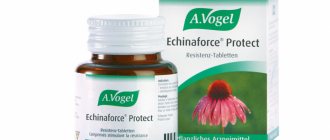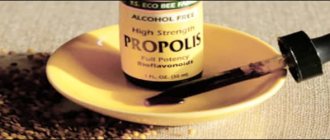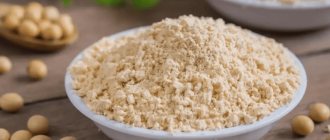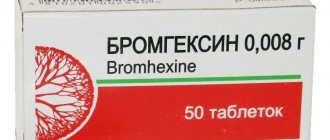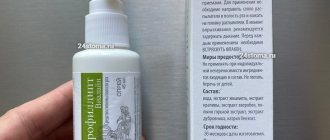Characteristics of the substance
Latin name of the substance : Bromhexinum
Formula : C14H20Br2N2
Chemical name : 2-Amino-3,5-dibromo-N-cyclohexyl-N-methylbenzenemethanamine. The preparations also contain it in the form of camsilate or hydrochloride.
Description : White crystalline powder, slightly soluble in water and alcohol.
Clinical and pharmacological group
- Mucolytic and expectorant drug
- Secretolytic and stimulator of motor function of the respiratory tract
Composition and release form
The drug is available in the form of tablets and syrup for oral administration. The tablets are white, coated with a special soluble coating. Packed in cardboard packaging up to 100 pieces.
Syrup of uniform color and consistency. Sold in dark glass bottles of 50, 60 or 100 ml.
The active substance of the drug is bromhexine. Its content in tablets and syrup varies from 4 to 8 mg. Auxiliary components: sucrose, pure water, ethyl alcohol, polysorbate, sodium hydrogen phosphate, eucalyptus oil.
Indications for use
Acute and chronic diseases of the respiratory tract, accompanied by the formation of difficult-to-discharge viscous secretions:
- pneumonia,
- tracheobronchitis,
- obstructive bronchitis,
- bronchial asthma,
- cystic fibrosis,
- emphysema,
- pneumoconiosis,
- pulmonary tuberculosis.
Sanitation of the bronchial tree in the preoperative period and during therapeutic and diagnostic intrabronchial manipulations, prevention of accumulation of thick viscous sputum in the bronchi after surgery.
What does Bromhexine help with?
Indications for taking Bromhexine are:
- Bronchiectasis.
- Tuberculosis.
- Bronchitis, predominantly obstructive.
- Cystic fibrosis.
- Pneumonia.
- Emphysema.
- Bronchial asthma.
In addition, the drug is prescribed before and after surgery to sanction the respiratory system and conduct diagnostic procedures.
Action
Pharmacological action - expectorant, mucolytic, antitussive.
The mucolytic effect is associated with the depolymerization of mucoprotein and mucopolysaccharide fibers and an increase in the serous component of bronchial secretions.
Reduces the viscosity of bronchial secretions by depolarizing the acidic polysaccharides it contains and stimulating the secretory cells of the bronchial mucosa, which produce secretions containing neutral polysaccharides.
Stimulates the production of endogenous surfactant, which ensures the stability of alveolar cells during breathing, their protection from unfavorable factors, improving the rheological properties of bronchopulmonary secretion, its sliding along the epithelium and the release of sputum from the respiratory tract.
Pharmacokinetics
Bromhexine is rapidly absorbed from the gastrointestinal tract and undergoes intensive metabolism during the “first pass” through the liver. Bioavailability is low, about 20%. In healthy patients, Cmax in plasma is determined after 1 hour.
Widely distributed in body tissues. The binding of bromhexine to plasma proteins is high. Penetrates through the blood-brain and placental barriers. In the liver it undergoes demethylation and oxidation. T1/2 in the terminal phase is about 12-15 hours. It is excreted in the urine mainly in the form of metabolites (ambroxol). The clearance of bromhexine or its metabolites may be reduced in patients with severe hepatic or renal impairment. May accumulate with repeated use.
Reception and dosage
Use the drug only according to the indications, method of administration and in those doses that are indicated in the official instructions or prescribed by a doctor.
Inside
- Adults and children over 14 years of age - 8-16 mg 3-4 times a day;
- children 6–14 years old and patients weighing less than 50 kg - 6–8 mg 3 times a day;
- children under 6 years old - 2–4 mg 3 times a day.
The duration of use depends on the course of the disease (usually no more than 4–5 days). If renal function decreases or severe liver disease, the dose should be reduced or the intervals between doses should be increased.
Inhalations
- Adults - 8 mg,
- children over 10 years old - 4 mg,
- at the age of 6–10 years - 2 mg,
- at the age of up to 6 years, use in doses of up to 2 mg.
Inhalations are carried out 2 times a day. The therapeutic effect may appear on days 4-6 of treatment.
Injections
Parenteral administration is recommended for treatment in severe cases, as well as in the postoperative period to prevent the accumulation of thick sputum in the bronchi. Administer 2 mg subcutaneously, intramuscularly or intravenously 2-3 times a day slowly over 2-3 minutes.
Bromhexine tablets for children
Release form
Tablets [for children] are flat-cylindrical, white or almost white, with a chamfer and a score.
Compound
Active ingredient : bromhexine hydrochloride 0.004 g.
Excipients : lactose monohydrate (milk sugar), corn starch, povidone K-25, magnesium stearate.
Production
- Ozon LLC / RIF LLC (Russia)
Package
From 10 to 50 tablets in a blister pack, from 1 to 5 packs in a cardboard box.
Pharmacological group
Mucolytic and expectorant drug
Action
Mucolytic (secretolytic), expectorant, weak antitussive.
Bromhexine: description of the substance
Indications
Acute and chronic diseases of the bronchi and lungs with impaired sputum discharge: tracheobronchitis, bronchitis of various etiologies, bronchiectasis, bronchial asthma, pulmonary tuberculosis, pulmonary emphysema, pneumonia (acute and chronic), pneumoconiosis, cystic fibrosis.
Sanitation of the bronchial tree in the preoperative period and during therapeutic and diagnostic intrabronchial manipulations, prevention of accumulation of thick viscous sputum in the bronchi after surgery.
Application and dosage
Inside, regardless of food intake.
- Adults and children over 10 years of age: 24–48 mg (6–12 tablets) per day, divided into 3 doses;
- children from 6 to 10 years old and patients weighing less than 50 kg: 12–24 mg (3–6 tablets) per day, divided into 3 doses;
- children from 3 to 6 years old: 6–12 mg (1.5–3 tablets) per day, divided into 3 doses.
The course of treatment is from 4 to 28 days. The therapeutic effect may appear on days 4–6 of treatment.
Contraindications and restrictions
- hypersensitivity to the components of the drug;
- peptic ulcer of the stomach or duodenum;
- pregnancy (1st trimester) and lactation period;
- age up to 3 years;
- hereditary lactose intolerance, glucose-galactose malabsorption, lactase deficiency.
With caution: renal and/or liver failure; bronchial diseases accompanied by excessive accumulation of secretions, gastric bleeding or a history of hemoptysis.
special instructions
During treatment, it is necessary to take a sufficient amount of fluid, which increases the expectorant effect of bromhexine.
In children, treatment should be combined with postural drainage or vibration massage of the chest, which facilitates the removal of secretions from the bronchi.
Side effects
Adverse reactions are listed below depending on the anatomical and physiological classification and frequency of occurrence. The frequency is defined as follows: very often (≥1/10); often (≥1/100 and <1/10); uncommon (≥1/1000 and <1/100); rare (≥1/10000 and <1/1000); very rare, including isolated reports (<1/10000), frequency unknown (frequency cannot be estimated from available data).
Immune system disorders: rarely - hypersensitivity reactions; frequency unknown - anaphylactic reactions, including anaphylactic shock, angioedema, itching, rhinitis.
Nervous system disorders: uncommon - dizziness, headache.
Respiratory system disorders: rarely - bronchospasm.
Gastrointestinal disorders: often - nausea, abdominal pain, vomiting, diarrhea; frequency unknown - exacerbation of gastric and duodenal ulcers, increased activity of “liver” transaminases in the blood serum.
Disorders of the skin and subcutaneous tissues: rarely - skin rash, urticaria; frequency unknown - severe skin reactions, including erythema multiforme, Stevens-Johnson syndrome, toxic epidermal necrolysis (Lyell's syndrome), acute generalized exanthematous pustulosis.
General disorders: uncommon - fever.
In case of all forms of allergic reactions (hypersensitivity, anaphylaxis) or in the event of any damage to the skin and/or mucous membranes, you must stop taking this medicine and immediately inform your doctor.
Storage
Store out of the reach of children at room temperature 15–25 °C. Shelf life: 2 years.
Recipe
Available without a prescription.
Restrictions
For diseases
Use under medical supervision:
- for diseases of the respiratory tract accompanied by excessive accumulation of secretions;
- with a history of gastric ulcer or gastric bleeding;
- with renal and/or liver failure;
- for bronchial asthma.
For children
Use with caution in children - according to indications, in doses and dosage forms recommended according to age.
Pregnancy and lactation
Use is contraindicated in the first trimester of pregnancy. Use in the II-III trimesters of pregnancy and during breastfeeding is possible only in cases where the expected benefit to the mother outweighs the potential risk to the fetus or infant.
Contraindications
The drug is contraindicated for use in the following cases:
- Ulcerative processes of the gastrointestinal tract in the acute period.
- Children under 2 years old.
- Breast-feeding.
- Individual intolerance to the drug.
- Allergy to sucrose.
- Women during pregnancy in the first trimester.
Bromhexine should be prescribed with caution to persons with impaired renal and liver function, diabetes mellitus, a large accumulation of exudate in the bronchopulmonary system, and pregnancy in the 2nd and 3rd trimester.
special instructions
During treatment, it is recommended to consume a sufficient amount of fluid, which supports the secretolytic effect of bromhexine.
In cases of impaired bronchial motility or with a significant volume of sputum secretion, the use of bromhexine requires caution due to the risk of retention of secretions in the respiratory tract.
In children, treatment should be combined with postural drainage or vibration massage of the chest, which facilitates the removal of secretions from the bronchi.
Side effect
Nervous system and sensory organs
Dizziness, headache.
Digestive system
Nausea, vomiting, dyspeptic disorders, abdominal pain, exacerbation of gastric and duodenal ulcers, increased activity of liver transaminases.
Respiratory system
Cough, bronchospasm.
Allergic reactions
Skin rashes, itching, urticaria, rhinitis, angioedema.
Other
Shortness of breath, increased body temperature, chills, increased sweating.
Stevens-Johnson and Lyell syndromes have been reported very rarely. If changes occur on the skin or mucous membranes, the drug should be stopped.
It is also possible to develop side effects caused by excipients.
Overdose
Symptoms: increased adverse reactions. Nausea, vomiting, diarrhea and other gastrointestinal disorders.
Treatment: artificial vomiting, fluid intake (milk or water) in the first 1–2 hours after administration, symptomatic therapy.
In children : Since children over 2 years of age, even after taking large doses of bromhexine, only mild symptoms are expected, detoxification may not be necessary with a dose of bromhexine hydrochloride up to 80 mg (for example, 100 ml of Bromhexine). In younger children, the appropriate dose limit is 60 mg bromhexine hydrochloride (6 mg/kg body weight).
Life-threatening overdoses with bromhexine in humans are unknown. There is no evidence of chronic toxicity.
Interaction
Bromhexine is not prescribed simultaneously with codeine-containing antitussive drugs, because due to the suppression of the cough reflex, the evacuation of liquefied sputum is difficult, which can lead to the accumulation of secretions in the respiratory tract.
The combination of glaucine + ephedrine + basil oil is not recommended for use simultaneously with bromhexine - due to difficulty in coughing up sputum.
When used simultaneously with some NSAIDs, it is possible to increase the irritant effect of the latter on the gastric mucosa.
Bromhexine is incompatible with alkaline solutions.
Bromhexine can be prescribed simultaneously with other drugs used in the treatment of bronchopulmonary diseases.
Promotes the penetration of antibiotics (erythromycin, cephalexin, oxytetracycline) and sulfonamide drugs into bronchial secretions, leading to an increase in the concentration of antibiotics in lung tissue.
Pharmacological properties of the drug Bromhexine Berlin-Chemie
Bromhexine - cyclohexyl-N-methyl-(2-amino-3-5-dibromobenzyl)-aminochloride - is a synthetic derivative of the active substance (vasicin) of plant origin. Bromhexine has a secretolytic and secretomotor effect in the bronchial tract, as a result of which bronchial secretion increases, the viscosity of mucus (sputum) decreases, and the activity of the ciliated epithelium increases, which promotes the evacuation of mucus (sputum). The simultaneous use of bromhexine with amoxicillin, erythromycin and oxytetracycline leads to a local increase in the concentration of these antibiotics in sputum and bronchial secretions. After oral administration, bromhexine is almost completely absorbed. The half-life is approximately 0.4 hours. The first-pass effect is approximately 80%, with the formation of biologically active metabolites. Bromhexine does not accumulate. Plasma protein binding is 99%. Bromhexine penetrates the placenta, into the cerebrospinal fluid and into breast milk. It is excreted mainly by the kidneys in the form of metabolites.
